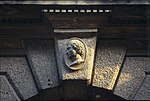2017 Verona bus crash

The 2017 Verona bus crash was a traffic collision that happened around midnight at night of 20–21 January 2017 on the A4 motorway at San Martino Buon Albergo, near Verona, in Italy. A coach that was transporting Hungarian high school students (14–18 yrs old) and their teachers back from a skiing trip in France collided with the highway traffic barrier, crashed into a bridge pylon, and then caught fire.The fire charred the bus. Sixteen people on board the bus were killed and at least 26 sustained injuries, 10 serious and two life-threatening. Some of the bodies of victims were burned beyond recognition, and the investigation team had to take DNA samples of the parents of the deceased victims to identify the bodies. One of the seriously injured victims suffered third-degree burns. He died on 22 March, raising the number of victims to 17. The accident became the second most severe foreign bus crash involving Hungarians after the 1999 Deutschlandsberg bus crash in which 18 people were killed.
Excerpt from the Wikipedia article 2017 Verona bus crash (License: CC BY-SA 3.0, Authors, Images).2017 Verona bus crash
Svincolo Verona Est,
Geographical coordinates (GPS) Address Nearby Places Show on map
Geographical coordinates (GPS)
| Latitude | Longitude |
|---|---|
| N 45.4108 ° | E 11.0911 ° |
Address
Svincolo Verona Est
Svincolo Verona Est
37036 , Case Nuove
Veneto, Italy
Open on Google Maps







